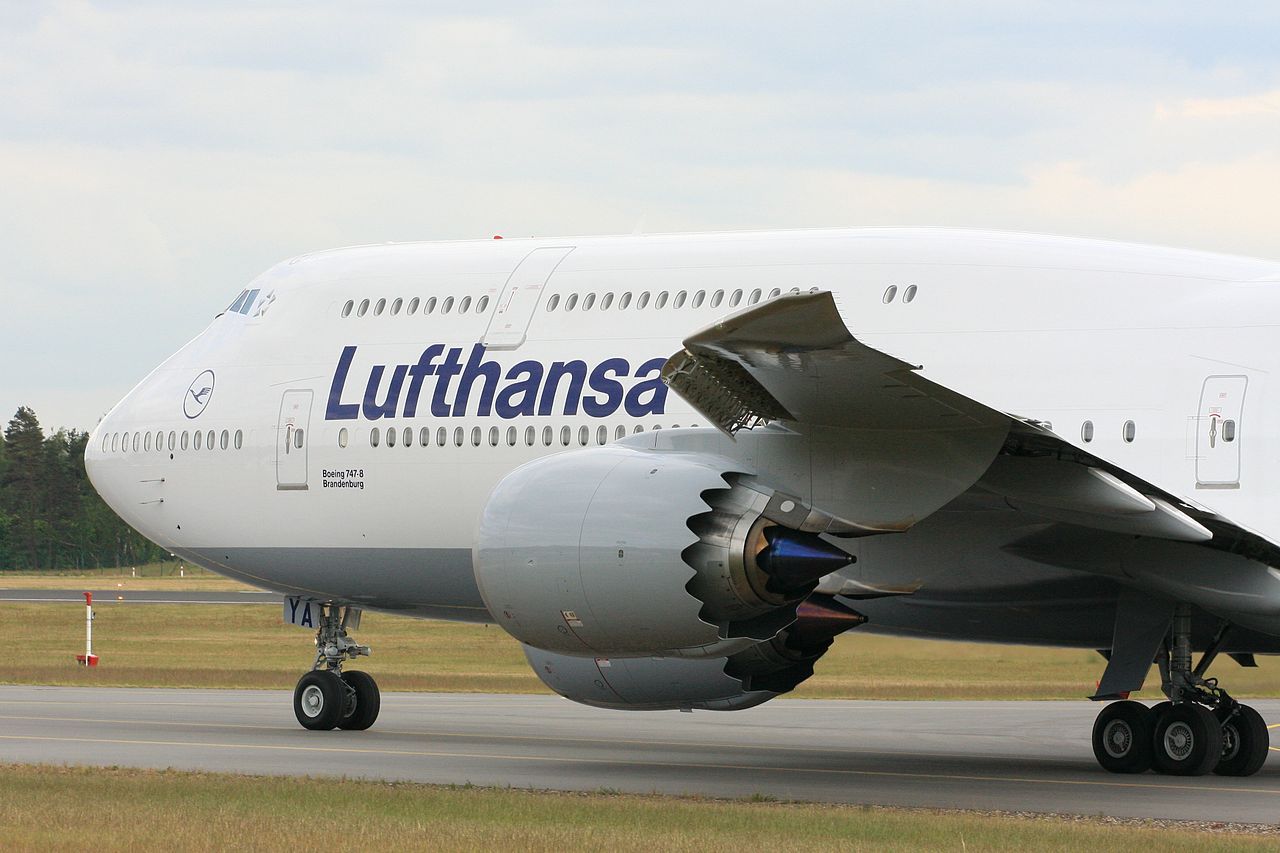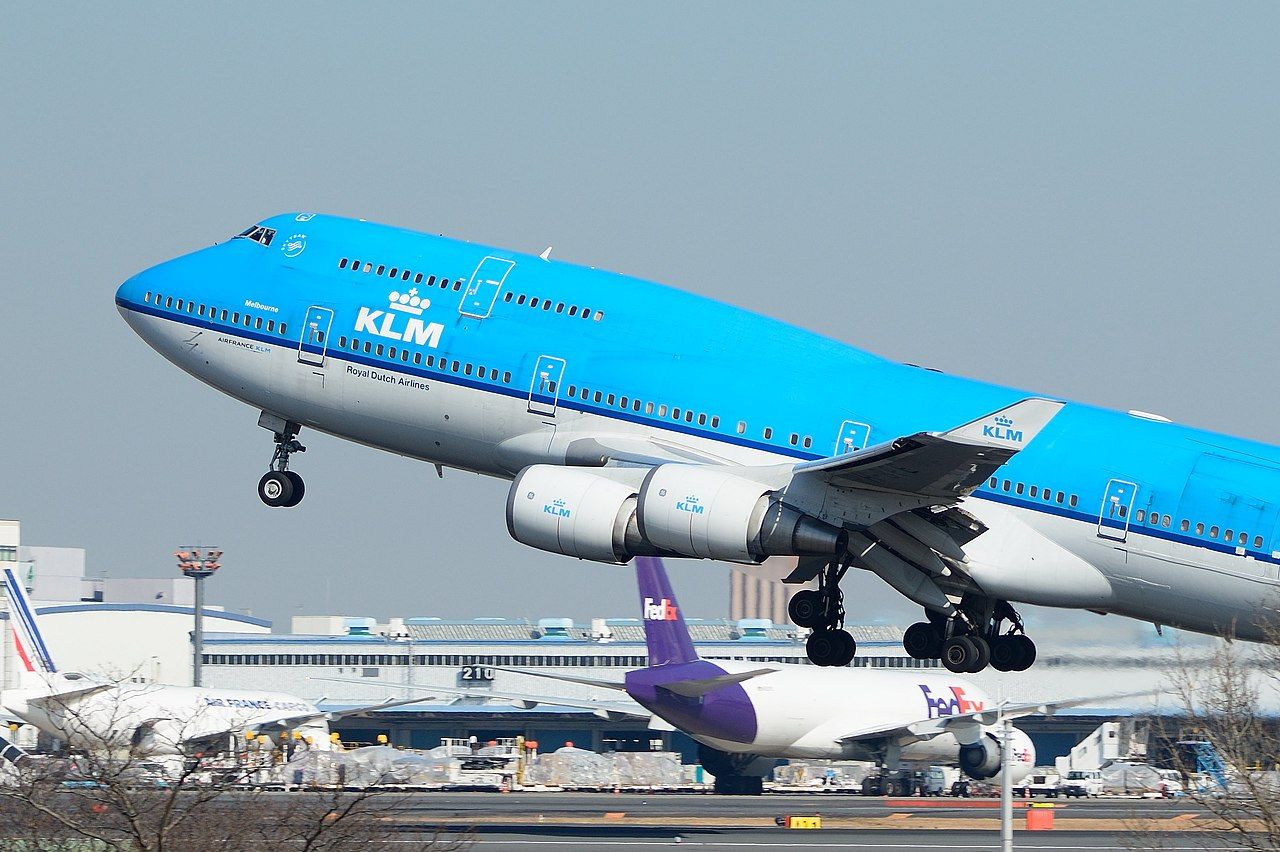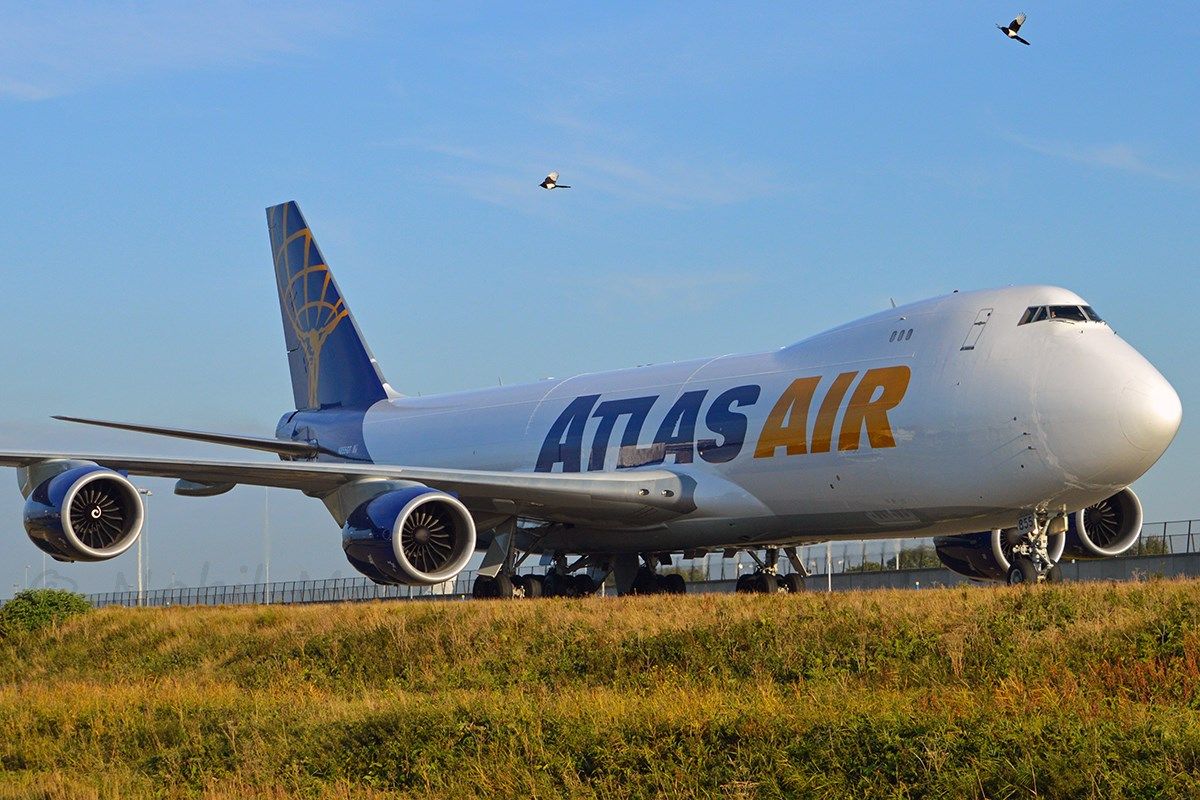Having improved upon the Boeing 747-100, 200, and 300, Boeing was determined to improve the latest version of its jumbo jet. The Boeing 747-400 would have newer, more efficient engines that would cut fuel burn by 10% and increase the range of 1,000 nautical miles. Minnesota-based Northwest Airlines became the first customer, entering the plane into service at Minneapolis–Saint Paul International Airport (MSP) on February 9, 1989.
Hugely more popular as a cargo aircraft with Atlas Air, Lufthansa, UPS Airlines, and Cargolux, production versions of the Boeing 747-400F continued for an additional four years after the production of passenger Boeing 747-400s had ended. In total, 694 Boeing 747-400s were built between 1988 and 2009, making it the most popular 747 ever built.
The Boeing 747-8 had many components taken from the Boeing 787 Dreamliner
Developed from the Boeing 747-400 after Airbus planned to build a massive two-deck airliner that would become the Airbus A380, Boeing decided to make a larger and more efficient 747. While the characteristics of the two planes would be very similar, Boeing took what it had learned from the 787 Dreamliner and incorporated it into the new 747-8. Technological and airframe improvements included the following:
- Using the Rolls-Royce Trent 1000 and General Electric GEnx engines developed for the 787 Dreamliner.
- New advanced airfoils for a greater overall performance and fuel capacity.
- Spoilers and outboard ailerons were controlled with fly-by-wire technology that saved weight.
- An improvement in low-speed performance and noise levels after installing double-slotted inboard and single-slotted outboard flaps.
- A new, improved flight deck similar to the one found on the Boeing 787 Dreamliner.
The Boeing 747-8 had 51 more seats than the Boeing 747-400
The Boeing 747-8 offers airlines 51 additional seats over the Boeing 747-400 and 26% of additional cargo space, creating more revenue opportunities for its users. In addition to this, the interior of the Boeing 747-8i has an up-swept cabin that gives passengers a greater feeling of space. There is also more storage space for personal belongings. New LED lighting helps to create a better mood during the flight and relieves jet lag after long-haul west to east flights.
The engine cowlings are an obvious giveaway
When looking at the planes side-by-side, it is challenging to tell the Boeing 747-400 and the Boeing 747-8 apart unless you know what to look for. The obvious giveaway is that the Boeing 747-8 has larger engines than the Boeing 747-400. These engines also have serrated cowling edges, just like the ones on the Boeing 787 and the Boeing 737 MAX. The Boeing 747-8 also does not have the winglets that Boeing introduced on the 747-400.
Compared to the Boeing 747-400, which has a wingspan of 213 feet, the wingspan of the Boeing 747-8 is 11 feet and four inches longer. While the Boeing 747-8 is slightly higher than the Boeing 747-400, it is only two inches more and barely noticeable. With an extra 51 seats, the Boeing 747-8 is 18 feet four inches longer than the -400.
Despite these subtle differences, looking at the engine cowlings is by far the easiest way to spot the difference.




